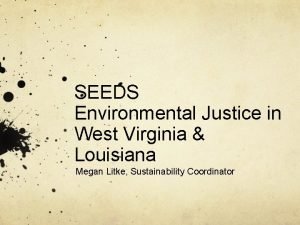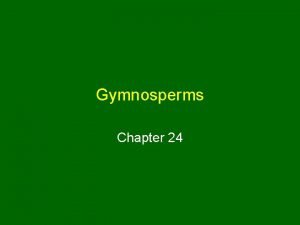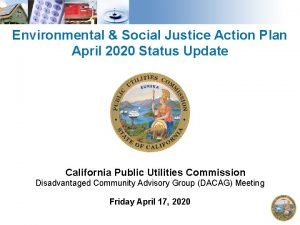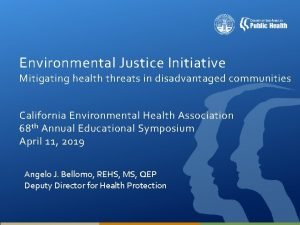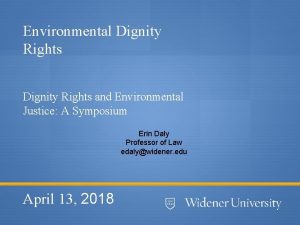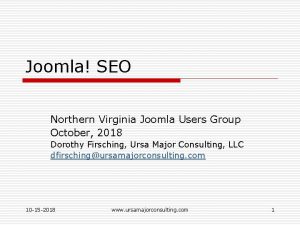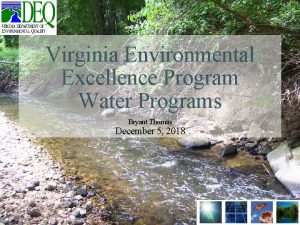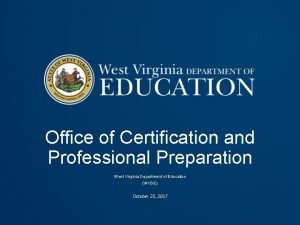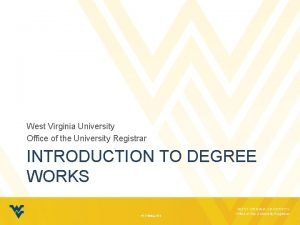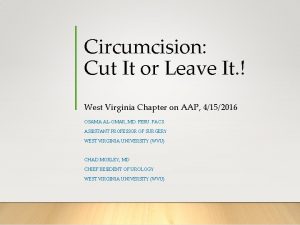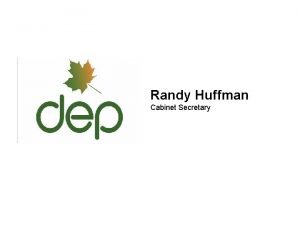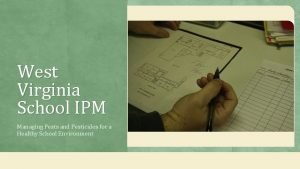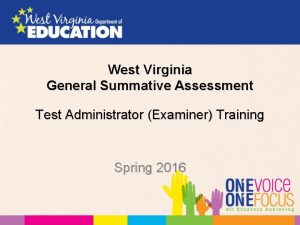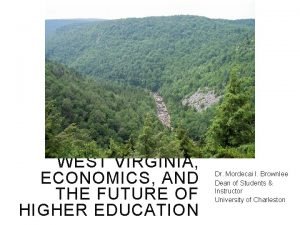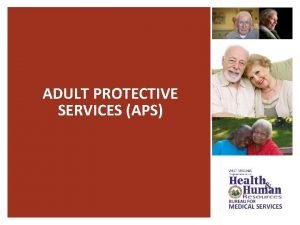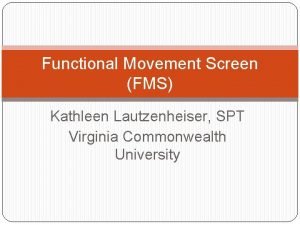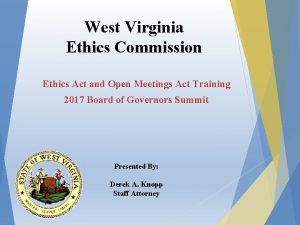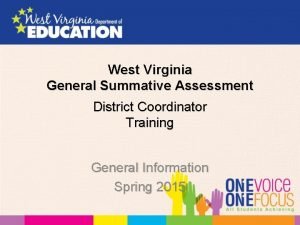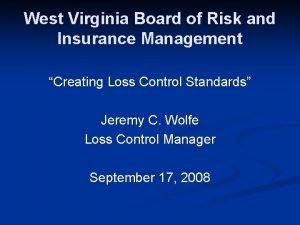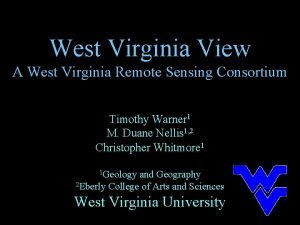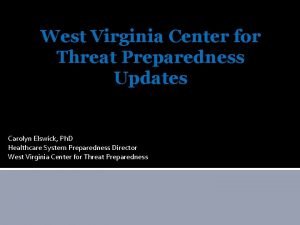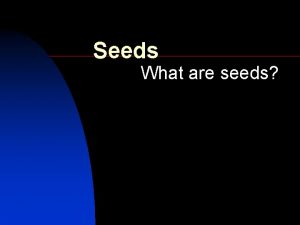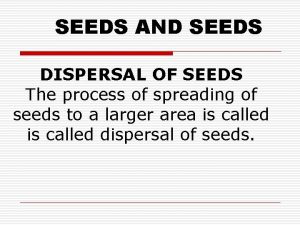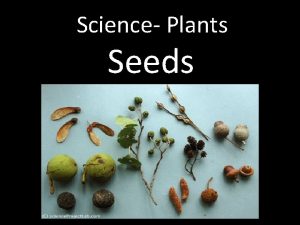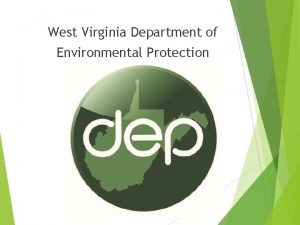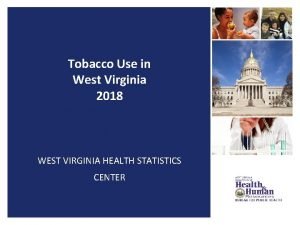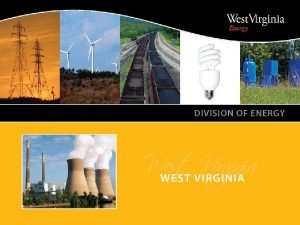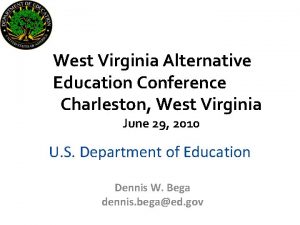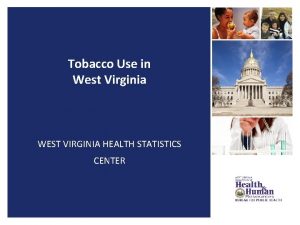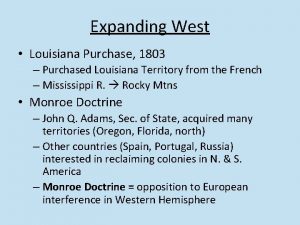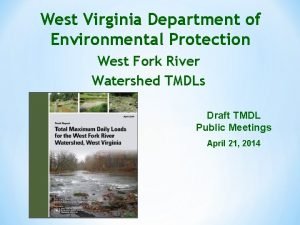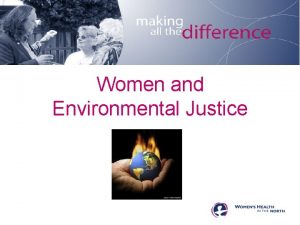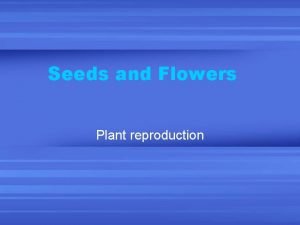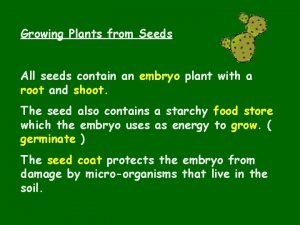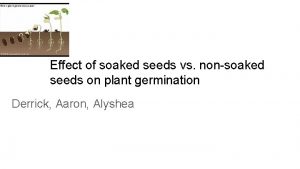SEEDS Environmental Justice in West Virginia Louisiana Megan



























- Slides: 27

SEEDS Environmental Justice in West Virginia & Louisiana Megan Litke, Sustainability Coordinator

Agenda Sustainability and Environmental Justice Roots of the Problems Louisiana and West Virginia EJ Communities Empowerment Reflection Discussion

Sustainability Triple Bottom Line UN Definition 1987 Bruntland Commission defined sustainable development as "development which meets the needs of current generations without compromising the ability of future generations to meet their own needs. ”

“Sustainability is about making the world work for 100% of the people. ” -L. Hunter Lovins

Environment al Justice “Environmental Justice is the fair treatment and meaningful involvement of all people regardless of race, color, national origin, or income with respect to the development, implementation, and enforcement of environmental laws, regulations, and policies. ” EPA Photos from: http: //ecenter. colorado. edu/environmental-justice

Our Contributions to EJ problems Desire for STUFF that is cheap, disposable Desire for ELECTRICITY that is cheap We rely on fossil fuels for the electricity and the stuff We need a place to dispose of the stuff Plastics can often be recycled, but recycling is only a second best option Recycling is a manufacturing process Sometimes overseas Communities located near factories/mining/landfills/power plants are often EJ communities

We in the developed world allow others to subsidize our standard of living. Chad: The Aboubakar family of Breidjing Camp Food expenditure for one week: 685 CFA Francs or $1. 23 United States: The Revis family of North Carolina Food expenditure for one week: $341. 98 From Time Magazine’s What the World Eats, Photos by Peter Menzel author of “Hungry Planet” http: //www. time. com/time/photogallery/0, 29307, 1626519, 00. html

Cheap isn’t cheap Others pay with: Their health Their access to clean water Their access to healthy work environments Their access to food Loss of their natural resources Loss of their heritage

NIMBY Key issues: siting of landfills, factories, power plants, industry, etc. Concerns of residents: risks of spills, fires, discharge of chemicals and waste and the human health impacts that could result

Environmental Justice Sites are chosen where local resistance is expected to be minimal or where land has little value Communities most likely to house these facilities are communities with a large concentration of minorities who have below average income, education, employment, and voting participation In a study in LA, race was determined to be the dominant factor; income was secondary Sadd, J. L. et al 1997

Cancer Alley 150 petro-chemical facilities within 100 miles. “Fallout” (term from the EPA) from these facilities is a toxic cocktail of airborne chemicals that affects food, water and soil. Each refinery puts out hundreds of thousands of pounds of toxic chemicals. Many studies link these chemicals to the exceedingly high levels of cancer in Louisiana.

Cancer Alley Area is predominately African-American, Latino, and low-income "CLEAN THEM UP OR SHUT THEM DOWN" (photo by S. Kittner)

Katrina • Environmental problems caused by Katrina were disproportionately felt by populations within the city. • • • floodwaters released toxic substances into the air and water; where damage to previously contaminated sites as well as water and sewage treatment facilities occurred; and where the debris and waste was placed and how it was disposed of http: //www. hurricanekatrina. com/hurricane-katrina-pictures-

Katrina Timeline http: //www. nola. com/katrina/graphics/flashflood. swf

Mountain Top Mining 1. Layers of rock and dirt above the coal (called overburden) are removed. 2. The upper seams of coal are removed with spoils placed in an adjacent valley. 3. Draglines excavate lower layers of coal with spoils placed in spoil piles. 4. Regrading begins as coal excavation continues. 5. Once coal removal is complete, final regrading takes place and the area is revegetated. http: //www. dailykos. com/story/2010/07/30/888765/-KY-Sen-Paul-saysmountain-top-mining-enhances-land

The Mountaintop Removal Process 1) CLEARING The hardwoord forests that blanket the mountain are clearcut to prepare the mountain for blasting. Sometimes the timber is harvested, but often the trees are burned or pushed down the mountainside. Topsoil is often pushed into the valley below. 2) BLASTING To dislodge the earth and rock above the coal seams, termed as overburden by the coal industry, ammonium nitrate explosives are detonated in holes drilled into the mountain. In addition to the soil and rocks loosened by blasting, white silica and chemical -laden dust become airborne, settling on the surrounding communities. Prolonged silica inhalation leads to silicosis. 3) DIGGING The rubble left in the wake of the blasts is removed by 20 -story tall dragline excavators and house-sized haul trucks, exposing the mountain's coal seams. Blasting and digging can remove as much as 1, 400 feet of elevation from a mountain.

4) VALLEY FILLS Haul trucks dump the rubble into the valleys below the mountain to create valley fills, which have burried over 1, 900 miles of headwater streams. The denuded mountain and rubble-filled valleys increase flooding due to increased runoff during rainfall. 5) PROCESSING and RECLAMATION After the coal has been mined, reclamation begins. Barren land is covered with plants and grass hardy enough to survive in the rocky ground left behind. In some cases, hardwood trees can take hold again, but in all instances it will take the long process of succession for native ecosystems to return. Descriptions and pictures from “Journey Up Coal River” http: //auroralights. org/map_project/t heme. php? theme=mtr&article=17

Mountain Top Mining an increase of minerals in the water -- zinc, sodium, selenium, and sulfate levels may increase and negatively impact fish and macroinvertebrates leading to less diverse and more pollutant-tolerant species streams in watersheds below valley fills tend to have greater base flow; streams are sometimes covered up wetlands are, at times inadvertently and other times intentionally, created; these wetlands provide some aquatic functions, but are generally not of high quality forests may become fragmented (broken into sections) the regrowth of trees and woody plants on regraded land may be slowed due to compacted soils grassland birds are more common on reclaimed mine lands as are snakes; amphibians such as salamanders, are less likely cumulative environmental costs have not been identified there may be social, economic and heritage issues

Mountain Top Mining Heavy metals and chemicals from coal slurry end up in the ground water Tooth enamel and gall bladder issues Cancer from air pollutants NYTimes Birth Defects Downstream impacts

West Virginia and Louisiana Love of place Unique resource-rich geographies Multi-generational oil and coal industry influence Cultures connected with the outdoors Environmental Justice is about empowering the communities

“You Don't Have to Move Out of Your Neighborhood to Live in a Better One. ” -Majora Carter

Progress Commitment to LEED Silver First one opened in 2009, with double digit increases in test scores Langston Hughes is LEED Silver

LEED Leadership in Energy and Environmental Design Nationally recognized standard for creating green buildings Includes planning, design, construction, operations, occupancy, end of life Nine buildings on campus are certified or in the process of becoming certified

LEED Categories Sustainable Sites Water Efficiency Energy and Atmosphere Materials and Resources Indoor Environmental Quality Innovation/Exemplary Performance Regional Priorities

Coal River Mountain Watch


Campus Sustainability Resources Sustainability. richmond. edu @Be. AGreen. Spider on Twitter University of Richmond Sustainability on Facebook sustainability@richmond. edu USGBC Students Green. UR
 West virginia to louisiana
West virginia to louisiana Seeds are present but naked in
Seeds are present but naked in Ldeq dmr
Ldeq dmr Cpuc environmental and social justice action plan
Cpuc environmental and social justice action plan What is environmental justice
What is environmental justice What is environmental justice
What is environmental justice Northern virginia seo audit
Northern virginia seo audit Virginia environmental excellence program
Virginia environmental excellence program Form 39 wvde
Form 39 wvde West virginia budget
West virginia budget Mountainhealthtrust
Mountainhealthtrust Wvu office of the registrar
Wvu office of the registrar Circumcision
Circumcision Characteristics of gifted students
Characteristics of gifted students Randy huffman west virginia
Randy huffman west virginia Fumigation west virginia
Fumigation west virginia West virginia summative assessment
West virginia summative assessment West virginia
West virginia Adult protective services wv
Adult protective services wv Functional movement screen west virginia
Functional movement screen west virginia Aetna better health wv provider phone number
Aetna better health wv provider phone number West virginia ethics commission
West virginia ethics commission Wvgsa practice test
Wvgsa practice test Unicare wv medicaid
Unicare wv medicaid Operational risk management wv
Operational risk management wv West virginia view
West virginia view West virginia energy code
West virginia energy code West virginia center for threat preparedness
West virginia center for threat preparedness
